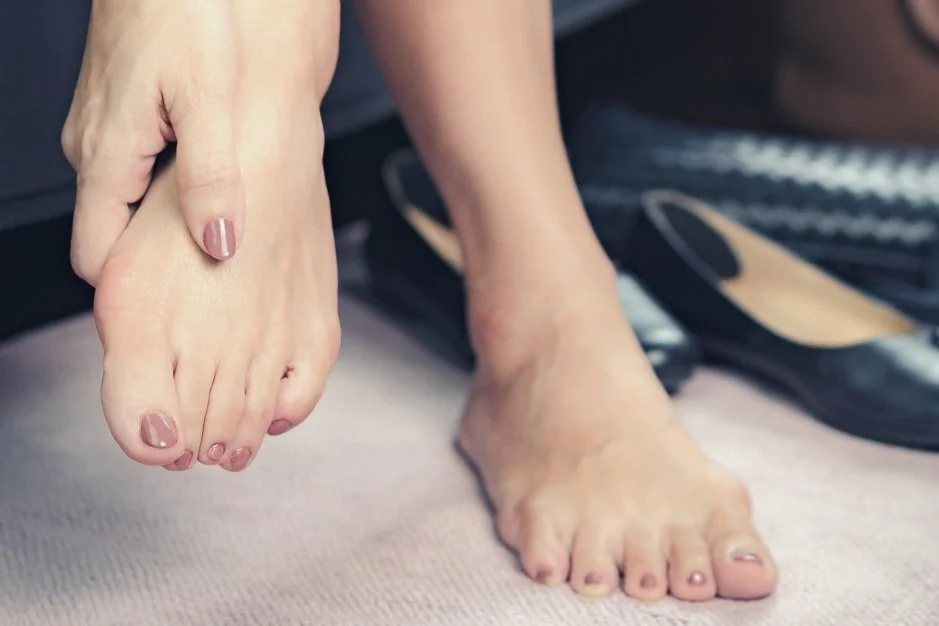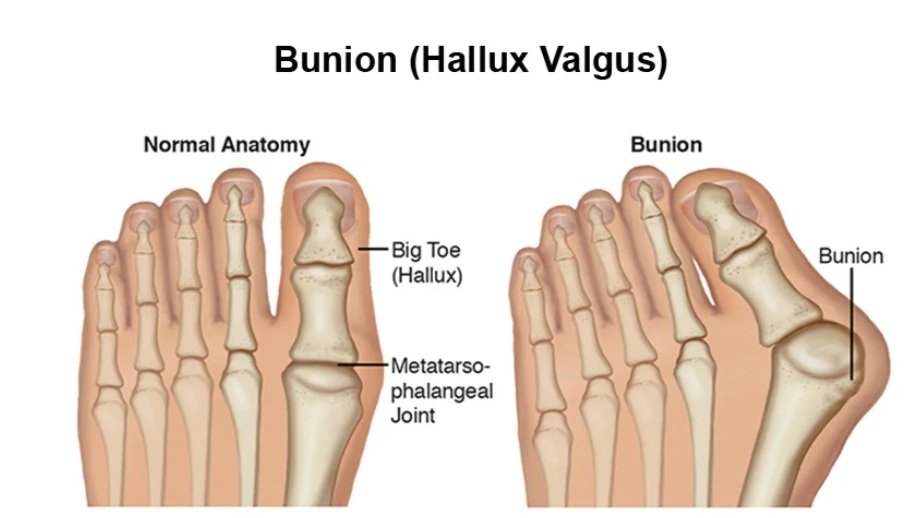Physical Therapy for Bunions
A bunion is a bony bump that develops at the base of the big toe, causing pain and swelling. Over time, bunions can change the anatomy and biomechanics of the foot, negatively impacting an individual’s mobility and function. Physical therapy can help to reduce bunion pain, increase the function of the big toe, improve muscle strength in the foot, ankle, and lower leg, and restore walking ability.
What are Bunions?
A bunion is a bony bump that develops at the base of the big toe. It’s a relatively common, progressive deformity of the MTP joint of the big toe that changes the anatomy and biomechanics of the foot. When you walk, you place a significant amount of stress on the MTP joint as you push forward to the next step through the force of the big toe and two adjacent toes. Normally, the MTP joint should experience straight flexion and extension when walking, but for many the anatomical alignment of the bones of the foot causes the MTP joint of the big toe to experience twisting and side-bending action, leading to bunions over time.
Other factors that contribute to the development of bunions include foot shape, heredity, flat arches, joint laxity, osteoarthritis, poor walking mechanics, muscular imbalances in the foot, ankle, and lower leg, tight footwear, and foot injuries. While tight shoes don’t necessarily cause bunions, they place increased pressure on the forefoot and irritate the tissue of the joint, causing swelling and pain.
There is no direct correlation between the size of the bunion and a patient’s symptoms. Some may have severe bunion deformities with minimal symptoms, while those with mild bunion deformities may have significant symptoms. Bunions affect up to 1 in 3 Americans and are more common among women than men, affecting nearly 35% of women over the age of 65.
Common symptoms of bunions include:
Pain and swelling in the big toe joint that worsens with standing and walking
Gradual enlargement of bump on side of the foot that becomes inflamed and swollen
Pain when wearing shoes, making it difficult to find comfortable footwear
Changes in gait and difficulty walking
Changes in balance which increase the risk of falling
Crossing of the big toe and lesser toes causing crowding of the toes
How Physical Therapy Can Address Bunion Pain
Physical therapy can help to reduce bunion pain, increase the function of the big toe, improve muscle strength in the foot, ankle, and lower leg, and restore walking ability. Initially, the physical therapist provides a thorough evaluation of the patient, assessing foot anatomy, symptom development, medical history, how health and lifestyle are affected by the bunion(s), and the movement and strength of the ankle, foot, toes, leg, and hip.
Physical therapy for bunions can include:
Pain management: use of ice and modification of aggravating activities.
Patient education: address external factors that cause pain, e.g. minimize tight footwear that may aggravate the bunion(s).
Range of motion exercises: A bunion can negatively impact the big toe’s movement and range of motion which increases stress on the joint. The therapist teaches stretching techniques to restore normal motion in the foot, toes, and ankle.
Manual therapy: soft tissue and joint mobilizations to gently move the muscles and joints of the foot to improve movement, particularly in the joint of the big toe.
Muscle-strengthening: targeted strengthening of the muscles of the big toe, ankle, and foot. Strengthening of the legs and hips is included to address any muscle weaknesses or imbalances contributing to bunion development and pain.
Functional training: daily activity and work training
Orthotics and assistive devices: A therapist may use splints, toe separators, or shoe inserts and custom orthotics to relieve pain and adjust foot and ankle position. Splints and toe separators help reduce pain and pressure on the big toe, while orthotics help to keep the foot and ankle in correct position when walking.
Research has identified three key muscles in the foot and two in the calf that when strengthened can help to lessen pain and improvement movement in those with bunions. These five muscles support body weight and forward motion, working to stiffen the arch of the foot and help keep it from rolling in which better supports the big toe.
Some severe cases of bunions can require surgery to correct the alignment of the big toe and first metatarsal. Physical therapy after bunion surgery is essential to restore strength and movement post-surgery, regain proprioception safely, and help the patient return to the highest level of function possible.
Are you dealing with bunion pain? Is it impacting your mobility and function? Work with a physical therapist today to address bunion pain!

